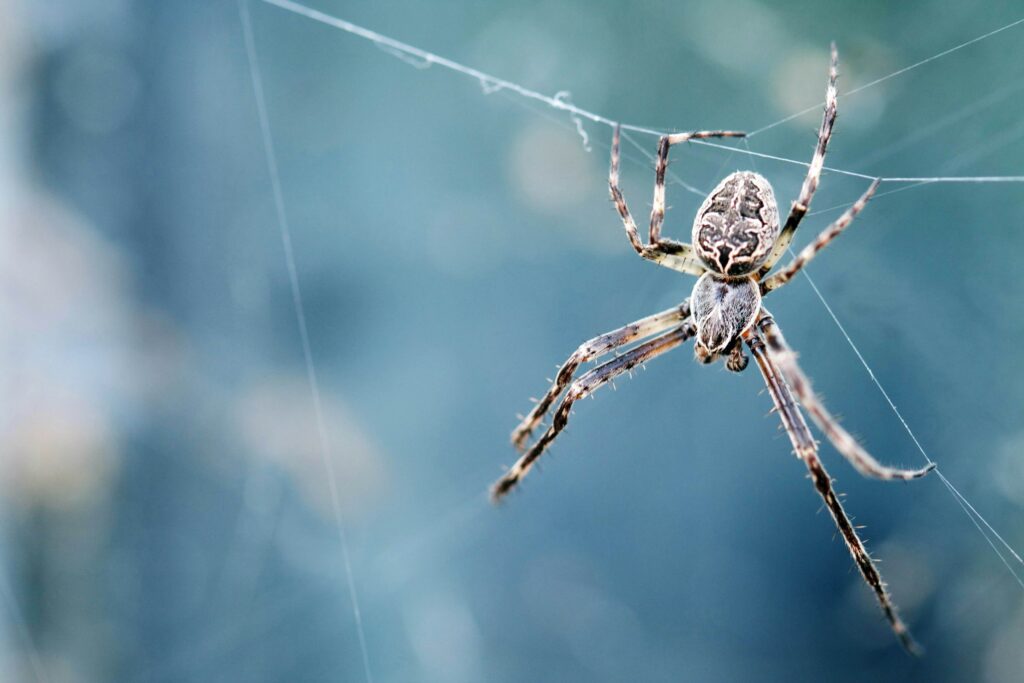Want to share feedback? Contact us.
I’ve often wondered, “Do LED lights attract spiders?” but found the internet lacking in clear, helpful information. Having now spent considerable time with LED lights, I’ve gained firsthand knowledge on this topic.
So, I’ve penned this article to share my insights and provide you with a comprehensive answer to this intriguing question.
Do LED Lights Attract Spiders?
Yes, LED lights can indirectly attract spiders. Here’s why. Spiders are not directly attracted to light. Instead, they are opportunistic hunters. When LED lights draw in insects, spiders identify these areas as rich hunting grounds and are thus drawn in.
The color and intensity of the LED light are significant factors in this process. They can influence the number of insects attracted, and consequently, the number of spiders.
Interestingly, LED lights are generally less attractive to spiders than traditional incandescent lights. The reason is that LED lights emit less heat. However, it’s important to note that LED lights can still create environments that attract bugs.
And where there are bugs, there are often spiders. Spiders are always on the lookout for food, and a bug-rich environment created by LED lights is a perfect place for them to find their next meal. So, while LED lights may not directly attract spiders, they can indirectly lead to a higher spider presence.
Why Do Spiders Get Attracted To LED Lights?
Spiders are attracted to LED lights, but it’s important to understand the reason behind this attraction. It’s not the LED lights themselves that draw spiders in, but rather the insects that are attracted to these bright lights. These insects serve as a food source for spiders, making areas around LED lights ideal hunting grounds.

LED lights create bright spaces that insects are drawn to, and in turn, these insects attract spiders looking for their next meal. Additionally, the warmth generated by outdoor LED lights can make these areas particularly inviting for spiders, especially during cooler evenings. This warmth, along with the shelter provided by light fixtures, offers a cozy environment for spiders.
Moreover, the structure of light fixtures, with their crevices, nooks, and crannies, provides perfect anchor points for spiders to spin their webs. These fixtures become attractive sites for spiders to establish their presence, as they can easily catch their prey there.
So, while it may seem like spiders are drawn to the light itself, it’s actually the ecosystem of prey that these lights support which attracts them.
Do LED Lights Create Environments Conducive To Spiders?
Yes, LED lights can indeed create environments conducive to spiders. The reason behind this is that these lights attract insects, which are a primary food source for spiders. When insects are drawn to the light, spiders follow, capitalizing on the easy prey.
Additionally, LED lights provide warmth, a factor that spiders find appealing. This warmth, combined with the presence of insects, makes the area around LED lights an attractive spot for spiders.
The structure of outdoor light fixtures also plays a role. These structures often offer numerous opportunities for spiders to spin their webs. The nooks and crannies, the corners, and the underside of these fixtures are all potential web-spinning sites.
The type and intensity of lighting can also influence spider behavior. Bright lights are particularly effective at attracting insects, and therefore, spiders. The brighter the light, the more insects it attracts, and the more spiders you’re likely to find in its vicinity.
Strategically placed LED lights can provide spiders with the perfect conditions to weave their webs and set traps. By placing these lights in certain locations, you might inadvertently be creating a spider-friendly environment. So, if you’re not a fan of spiders, you might want to reconsider your lighting choices.
What Colors Are Attractive To Spiders?
Spiders, and wolf spiders in particular, have a certain affinity for the color green. This attraction is especially pronounced when it comes to light in the green wavelength. This is largely due to their dichromatic vision, which makes them highly sensitive to green and ultraviolet light.
Now, let’s consider the color preferences of other insects, which are often the prey for spiders. These insects are typically drawn to bright colors such as yellow, white, or orange. Some are also attracted to blue, white, blue-violet, and yellow light, as well as UV.
This is an important point to note because it could indirectly influence the colors that spiders are attracted to. The reason being, spiders might associate these colors with the presence of prey. So, in a way, the color preferences of their prey could shape the color preferences of spiders themselves.
What Color Lights Do Spiders Hate?
Spiders do have preferences when it comes to colors of light, and there are certain colors they tend to avoid. I’ve found that light blue is particularly effective in repelling spiders. This is a useful tip for keeping spiders away from specific areas, such as porches. It’s not uncommon to see porch ceilings painted light blue for this very reason.
Additionally, dark colors play a role in this dynamic but in an indirect manner. By discouraging the bugs that spiders prey on, dark colors can make an area less appealing to spiders. This means that using dark colors in your outdoor lighting or decor can help reduce the presence of both bugs and spiders.
Red-tinted lights also seem to have a deterrent effect on insects and some spiders. Incorporating red-tinted lights into your outdoor lighting strategy can be another effective way to keep these creatures at bay. By understanding and utilizing these color preferences, you can create spaces that are less inviting to spiders.
How Can You Prevent Spiders From Being Attracted To LED Lights?
You can prevent spiders from being attracted to LED lights. The first step is to choose your bulbs wisely. I recommend using yellow-toned or insect-resistant bulbs. These are less attractive to insects, and as a result, you’ll see a reduction in the spider population around your home.
When it comes to outdoor lighting, less is more. Try to keep outdoor lights near entrances to a minimum. These lights attract insects, which in turn, attract spiders. Another effective strategy is to use curtains or blinds at night. By blocking indoor light from spilling outside, you minimize the chances of attracting insects and spiders.
The color of your LED light also matters. Insects are less attracted to yellow and amber lights, while they are more attracted to blue and ultraviolet light. So, I recommend sticking to yellow and amber lights. LED lights with wavelengths above 550 nanometers are also a good choice. These lights are less likely to attract insects, and subsequently, spiders.
Turning off LED lights at night is another simple yet effective way to minimize attracting insects and spiders. In addition to these lighting strategies, consider spraying insecticide near LED lights. Also, ensure these lights are not located near potential spider entry points.
Lastly, don’t forget about regular maintenance. Cleaning and removing debris from gutters and downspouts can eliminate potential habitats for spiders. By following these steps, you can significantly reduce the chances of spiders being attracted to your LED lights.
Do LED Strip Lights Attract Bugs?
Yes, LED strip lights can indeed attract bugs. This attraction is primarily due to the brightness and warmth that these lights provide. Bugs, as we know, have a general affinity for lights, and LED strip lights are no different in this regard.
The color and intensity of the LED strip lights also play a significant role in this attraction. Bugs, for instance, are more drawn to blue and ultraviolet light. On the other hand, they show less interest in yellow and amber lights. So, if you’re looking to minimize bug attraction, I recommend opting for LED strip lights in these colors.
Now, let’s talk about the adhesive used in LED strip lights. While it doesn’t directly attract spiders or bugs, it can indirectly lead to their presence. Here’s how: the lights attract bugs, which are a food source for spiders.
So, if you notice spiders near your LED strip lights, it’s likely because the lights are attracting their meals. This is something to keep in mind when installing these lights, especially in outdoor areas.
